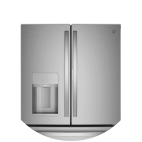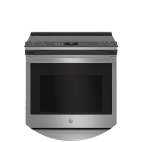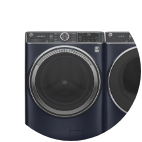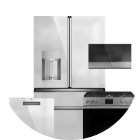GE Profile vs Bosch 800 Series Dishwasher
Jake Stone, Appliance Specialist, Frederick
Posted on Feb 14, 2020
Chances are if you’ve been looking up information on dishwashers recently, one of the brands that has come up recommended consistently is Bosch, a 130-plus-year old European company whose home appliance division is best known for, well, their phenomenal dishwashers. Equally likely, chances are that one of the brands that has not come up is General Electric. Not because they’ve got bad dishwashers or anything, but because they used to be not so great. Today, I’m going to compare the Bosch 800 series SHXM88Z75N to the GE Profile PDT785SYNFS.

Let’s get one thing out of the way first. The Bosch, known for their quiet dishwashers, clocks in at 40 decibels. The Profile actually beats it at 39. However, both of these dishwashers are virtually silent. Anything below about 43 or 44 decibels is going to be dang-near impossible to hear. So, if sound is your thing, you’re good to go with either dishwasher.

In terms of build quality, Bosch dishwashers are built like tanks. Just solid units, which you can feel by opening and closing the door and hearing that nice, satisfying snap as it closes. The door on the Profile feels lighter and latches with a softer “whoomph” of air. The stainless front panel also feels slightly flimsier. Inside is a different story. Solid, well-made steel interiors resist food stains and help to keep the sound levels down for both dishwashers. Ball bearing racks slide in and out smoothly, although Bosch uses a system of ball bearings around plastic wheels while Profile uses bearings set into metal glide racks, providing a much stronger feel and slightly smoother glide.
Both dishwashers have similar working wash systems. Three levels of wash arms ensure that everything gets soaked. The Profile takes it a step further by adding dedicated jets underneath the silverware basket and four tall bottle washers in the upper rack to effectively clean tall glasses and smoothie bottles. Both units allow you to run a cycle that concentrates specifically on the upper rack, but again the Profile adds a little extra versatility by giving you the option to concentrate on the lower rack as well. They both also have leak protection, that will stop the wash system and let you know if it detects a leak during the wash cycle.
Both units also have third level utility racks, great for longer awkward items like mixing spoons and spatulas. The Bosch’s MyWay™ Rack is deeper and more modular, allowing for things like ramekins and other shallow bowls and cups, and includes a movable tray for silverware. Both third racks are removable if you just don’t want them for certain cycles. The upper and lower racks on the Profile are deeper than the Bosch, and the tines are arranged in a more neutral way, and many can fold down completely out of the way so you can load it the way that works best for you.
Additionally, both dishwashers have efficient removable mesh cups for their filter systems, although the Profile has a hard food disposal built in to help get rid of bigger chunks. Conversely, the Bosch has a trap built into their filter cup that holds certain particles until they’ve had an opportunity to break down. Luckily, you don’t need to clean either filter, but both brands recommend that you rinse the filter every now and then, and in which case the Bosch’s trap system will make that experience a little less appealing.
Finally, the drying. Traditionally, the biggest complaint with Bosch has been this category, as their European design has always excluded a heating element. Although Bosch’s current generation continues this grand tradition, they have added a couple of tricks to help mitigate that particular eccentricity. In the bottom corner, they have added a compartment that contains a reactive mineral called Zeolite that heats up when exposed to water. After the final hot rinse cycle, the Zeolite starts absorbing the moisture in the air and heating up, which creates an environment that helps the drying immensely. The limitation to this, of course, is that it only gets so hot for so long. Even still, it leaps and bounds better than its predecessors. The Profile, on the other hand, uses a series of heating elements and fans to remove the humidity from the air and pump dry heat onto the dishes. The system cycles based on an algorithm specifically designed to maximize the drying of plastic and silicone items, which are generally the hardest things to get dry. All of those things combined create what is arguably one of the best drying systems in the industry.
Ultimately, both dishwashers are great at what they do, and it’s going to come down to the qualities that appeal to you best. If you care about drying, versatility and lots of useful features, Profile is probably the way to go. If you’re more about solid, dependable units with a sterling reputation, Bosch is hard to beat.
Shop these 2 dishwasher models below:












